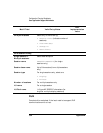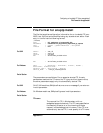
Appendix B 339
APPN Network Management Using the Simple Network Management Protocol
Introduction to SNMP
Introduction to SNMP
The Simple Network Management Protocol (SNMP) is an
industry-standard management protocol, originally designed for
managing TCP/IP networks. SNMP is described by a series of Request
for Comments (RFCs) that specifies and structures the information that
is exchanged between managing and managed systems. Although SNMP
is used predominately in TCP/IP networks, its popularity has caused its
use to be extended to managing additional software and hardware
products.
An SNMP agent is a process that runs on a system being managed and
maintains the MIB database for the system. An SNMP manager is an
application that generates requests for MIB information and processes
the responses. The manager and agent communicate using the Simple
Network Management Protocol.
SNMP agents (like the SNMPD daemon) typically have predefined MIB
objects that they can access. An SNMP subagent is used to extend the
number and type of MIB objects that an SNMP agent can support.
An SNMP manager can issue requests to an agent either to retrieve
information from the agent's MIB (an SNMP Get request), or to change
information in the agent's MIB (an SNMP Set request). An SNMP agent
can also send unsolicited messages to the SNMP manager (SNMP traps).
The interaction between SNMP components in a system is shown in
Figure B-1, “Overview of SNMP.”


















